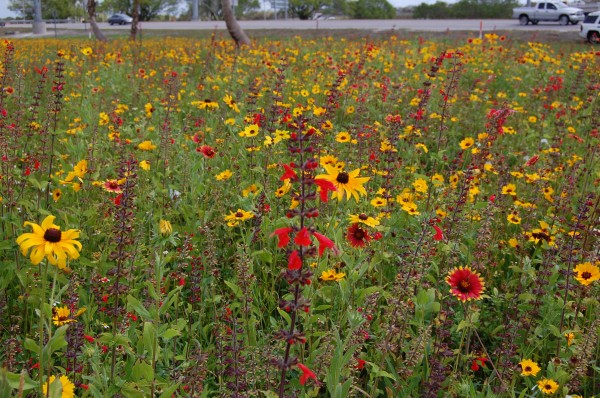Florida native plants for sustainable landscapes.
Visit PlantRealFlorida.org
 Wildflower area along Florida Turnpike in Broward County. Photo courtesy of Florida's Turnpike Enterprise, Florida Department of Transportation.
Wildflower area along Florida Turnpike in Broward County. Photo courtesy of Florida's Turnpike Enterprise, Florida Department of Transportation.The Florida Department of Transportation (FDOT) released a study in March 2014 concluding that roadside vegetation in the state highway system should be viewed as an asset, the value of which can be greatly improved through the use of sustainable vegetation management practices and native wildflower areas. The study conservatively estimated the value of Florida’s roadside vegetation at nearly half a billion dollars, measured in terms of ecosystem services such as runoff prevention and other functions.
The value of roadside vegetation could increase to:
Native wildflower areas add significant aesthetic value to our roadsides and help safeguard habitat for pollinators and other insects. The value of pollination services and pest control services provided by insects has not been estimated for roadside right-of-way ecosystems, but we know the potential is huge. Nationwide, scientists have estimated the value of pollination services by native bees (not honeybees) at nearly $2 billion annually for crops such as citrus, strawberries and vegetables. And the value of natural pest control by insects is even greater – nearly $5 billion.
Beauty, bees and butterflies are just the beginning. FDOT already recognizes that maintenance costs could be reduced 30% just by reducing the mowing schedule, a practice readily accommodated by incorporating and expanding wildflower areas on the roadside.
FDOT plants and maintains about 186,000 acres or one of every 200 acres land in Florida. Roadsides are a network of living edges, touching and linking nearly every natural and agricultural resource in the state – including some 9 million acres of farmlands contributing billions of dollars to the state’s economy each year. These extensive linear habitat strips also act as effective corridors for pollination services.
The Florida study was requested by the Florida Native Plant Partnership, including FANN, Florida Wildflower Foundation, Florida Native Plant Society and the Wildflower Seed & Plant Growers Association.